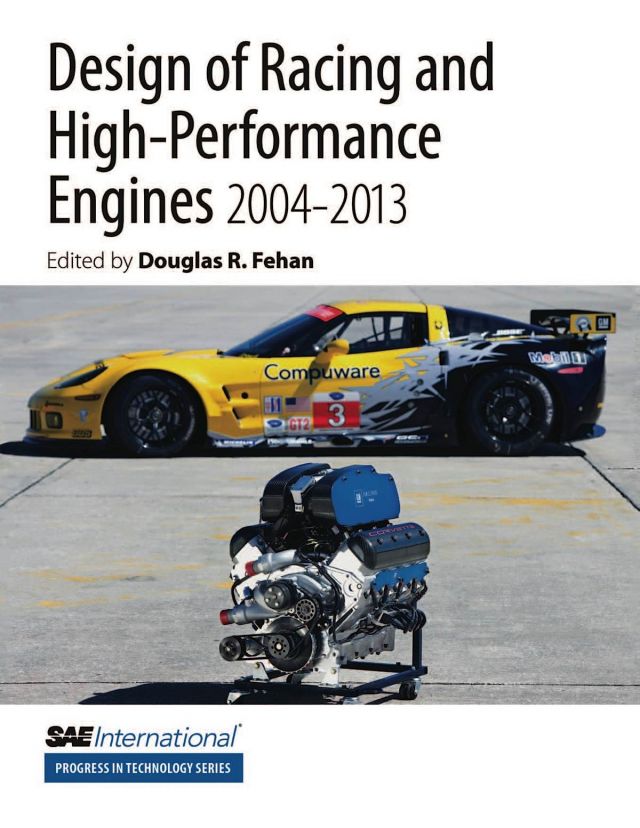Every few years, the Society of Automotive Engineers, (SAE International) compiles technical papers relevant to racing engines and publishes them in a bound volume. The latest edition is edited by Douglas Fehan and includes papers released in the past nine years.
Titled “Design of Racing and High-Performance Engines, 2004-2013,” these papers are rather heady materials originally intended for engineers and scientists. The objective is to inspire production-vehicle engineers to use race secrets in improving the future of automotive transportation. With the environment so much a part of today’s automotive landscape, it’s no surprise that papers are devoted to topics like CO2 emissions, E85 fuels and energy recovery systems.
 The book offers glimpses into future technologies that may trickle further down into motorsports. For example, hardware-in-the-loop testing is prevalent at the OE level and Formula 1 teams. Now some rally teams are using them. Most of the work involves setting up ECUs, so it won’t be long before companies like FAST or AEM utilize advanced simulation tools to conduct virtual tests in addition to dyno or track testing. Aftermarket engine-management systems will continue to increase in both sophistication and user-friendliness, so advanced test methods will have to be implemented to make the improvements cost-effective. Other advanced simulation tools, such as CFD, are covered in the book.
The book offers glimpses into future technologies that may trickle further down into motorsports. For example, hardware-in-the-loop testing is prevalent at the OE level and Formula 1 teams. Now some rally teams are using them. Most of the work involves setting up ECUs, so it won’t be long before companies like FAST or AEM utilize advanced simulation tools to conduct virtual tests in addition to dyno or track testing. Aftermarket engine-management systems will continue to increase in both sophistication and user-friendliness, so advanced test methods will have to be implemented to make the improvements cost-effective. Other advanced simulation tools, such as CFD, are covered in the book.
Small engines seemed to be a running theme in the book, so you won’t find big-block Chevy buildups. In fact, many of the papers involve Formula SAE projects. One of the more interesting papers followed the installation of a supercharger to a motorcycle engine. The authors discussed the challenges of reducing blow-by with changes in cam timing, designing an improved intake manifold, adapting an intercooler and optimizing the fuel and spark maps.
Perhaps the most practical paper for racers covered tests of airflow through a restrictor. Many sanctioning bodies have rules limiting the size of the air inlet, and this paper looked at ways of maximizing the mass air flow through restrictors.
Again, these are very intense scientific papers and generally focus on results from simulation and computer modeling programs. Also, the price is a bit steep at just under $110 list (there are SAE member discounts). But if you’re interested, check out all the SAE motorsports publications at the SAE International bookstore. This book is available in both print and digital format.

















